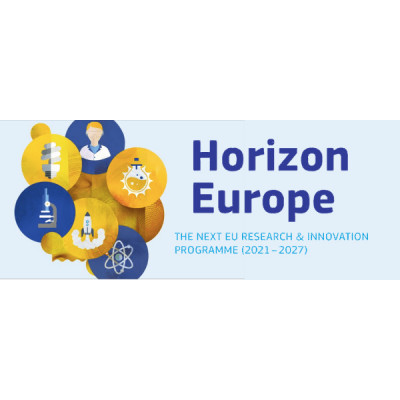Share
Print

Call updates
Oct 21, 2021 1:12:04 PM
On 19 October 2021, a total of 142 full proposals were submitted in response to the following 2021 topics: HORIZON-CL5-2021-D6-01-10: 22 proposals
Jun 24, 2021 12:00:04 AM
The submission session is now available for: HORIZON-CL5-2021-D6-01-10(HORIZON-RIA)
Testing safe lightweight vehicles and improved safe human-technology interaction in the future traffic system
TOPIC ID: HORIZON-CL5-2021-D6-01-10
Programme: Horizon Europe Framework Programme (HORIZON)
Call: Safe, Resilient Transport and Smart Mobility services for passengers and goods (HORIZON-CL5-2021-D6-01)
Type of action: HORIZON-RIA HORIZON Research and Innovation Actions
Type of MGA: HORIZON Action Grant Budget-Based [HORIZON-AG]
Deadline model: single-stage
Opening date: 24 June 2021
Deadline date: 19 October 2021 17:00:00 Brussels time
Topic description
ExpectedOutcome:
Project results are expected to contribute to the following expected outcomes:
For Area A:
For Area B
Scope:
Actions should address the activities EITHER under area A) Testing safe lightweight vehicles OR under area B) Safe human-technology interaction in the future traffic system. Proposals should clearly indicate which area they are covering.
Area A –Testing safe lightweight vehicles
Automotive safety has significantly progressed in the last decades thanks to advanced modelling and testing capabilities and new structural concepts, as well as the introduction of active safety.
Future vehicles and their structures, however, will have to be lighter and lighter, and this means already an intrinsic reduction of safety when crashing with a heavier crash counterpart. Moreover, new structural concepts will need to be more and more designed with a circular use of materials in mind, and structures with mixed light materials and related manufacturing concepts (including casting and 3D printing of complex shapes, for instance in energy absorbers or highly integrated structural components) will be widely different from today’s mostly sheet steel based concepts. Advanced testing on crash, toughness, fracture and fatigue of new materials and concepts should be performed where relevant. A smart integration of these concepts are expected to lead the demonstration of a more sustainable and safe body-in-white with at least a 10% weight reduction on already achieved results for multimaterial research structures.
In this context, the proposed actions should analyse the crash scenarios of the future, considering active safety devices but also their potential failure and the fact that for a long time there will be a mixed traffic situation where automated and semi-automated vehicles will share the road with normal “manually driven” vehicles and all types of unprotected road users.
This requires a new way of conceiving structures and their components, to ensure that all requirements are met at the same time and to further increase safety by including vehicle compatibility concept, like harmonised rigidity between light and heavy vehicles, so that the heavy vehicle helps the more vulnerable one in absorbing the impact energy. Standardised positions for crash absorbing elements should be addressed to ensure the best engagement scenarios, as well as multi-angle optimisation, to avoid that structures are optimised only for the exact test cases in regulation or in EuroNCAP tests. A significant number of crash tests is expected to be performed for validating the different scenarios.
Area B –Safe human-technology interaction in the future traffic system
Another challenge for the safety in future transport systems and services is the ever growing and intensified human interaction with ubiquitous digital content. The overload of various kinds of information from multiple sources can lead to increased driver or unprotected road user distraction and have negative impacts on road safety.
Human machine interfaces (HMI) with adaptive characteristics continue to be developed and new functionalities are continuously added, yet the impacts of those systems on the behaviour of drivers and other road users are not sufficiently known. Further research on the effects of such technologies in road transport safety is required.
These adaptive HMI systems can support a wide range of traffic users and could be included in scenarios based on the mixed traffic and accidentology where needed. As such the applications are not limited to higher levels of vehicle automation. Therefore, they need to consider a wide variation of human capabilities and reactions as well as long-term mental and physical capacities (including disabilities and disorders) and instantaneous limitations in capabilities (collapse, illness, drowsiness, etc.).
In particular, the following aspects should be considered by future research:
While this topic is open to research on all human-technology interaction in the road transport system, specific issues of the interaction of highly automated vehicles with their occupants and other road users are covered in topic HORIZON-CL5-2022-D6-01-02.
Typically, projects should have a duration of 36 to 48 months. Nonetheless, this does not preclude submission and selection of proposals requesting other amounts or durations.
Social innovation is recommended when the solution is at the socio-technical interface and requires social change, new social practices, social ownership or market uptake.
Specific Topic Conditions:
Activities are expected to achieve TRL 5-6 by the end of the project – see General Annex B.
Cross-cutting Priorities:
Social Innovation
